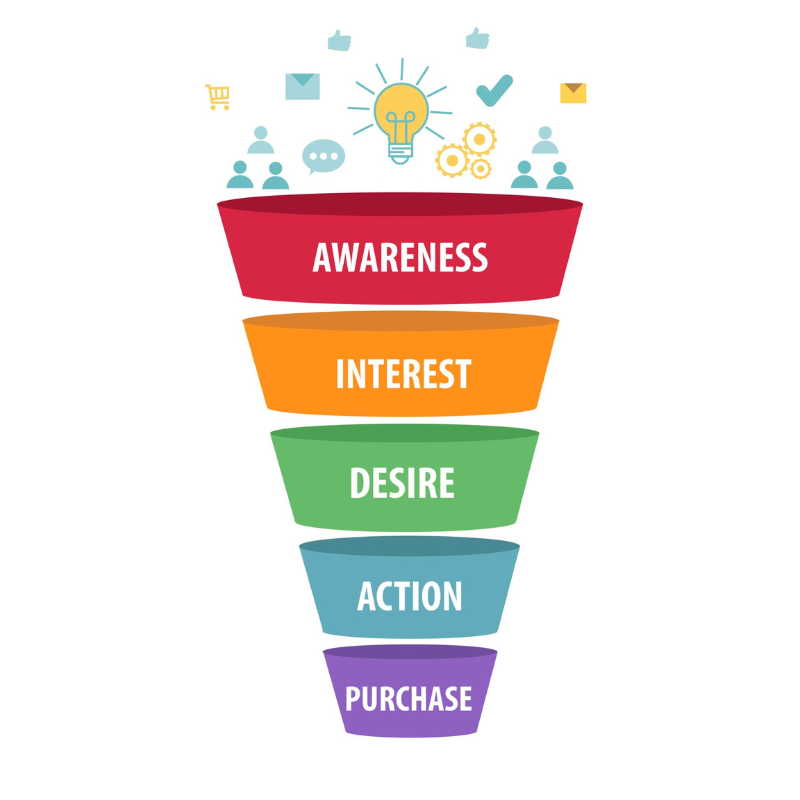For many B2B organizations, particularly in industries such as SaaS, manufacturing, and professional services, the sales cycle is anything but brief. Complex decision-making processes, multiple stakeholders, and high investment thresholds often stretch the buyer’s journey across months or even years. In these long sales cycles, staying top of mind and consistently delivering value are critical. This is where inbound marketing, powered by platforms like HubSpot, becomes a strategic advantage.
Inbound marketing isn’t just about content creation or lead generation; it’s about fostering relationships through helpful, relevant, and timely engagement. When combined with marketing automation and account-based marketing (ABM), inbound becomes a powerful engine that can nurture prospects from awareness to decision and beyond. Let’s explore how inbound marketing nurtures the long sales cycle through strategic engagement at every stage, and how HubSpot empowers marketers to do it at scale.
Understanding the Long Sales Cycle
Before diving into the tactics, it’s essential to understand the unique challenges of long sales cycles:
- Multiple stakeholders: Deals often involve 5–10 decision-makers, each with distinct concerns and goals.
- Extended research phases: Buyers engage in weeks or months of research before contacting sales.
- Complex products or services: Offerings often require tailored explanations, demos, or consultations.
- High trust thresholds: With larger investments comes a higher demand for trust, credibility, and consistency.
These factors make a traditional outbound approach inefficient. Instead, inbound marketing aligns with how modern buyers behave, researching online, comparing vendors, and making informed decisions over time.
Stage 1: Awareness — Attracting and Educating
At the awareness stage, your goal is to help ideal customers discover your brand and start to understand their challenges. Inbound marketing begins with attracting qualified visitors through valuable content and strategic SEO. This is where HubSpot’s content management system (CMS), blogging tools, and SEO recommendations shine.
Key HubSpot Tools & Tactics:
- Topic clusters and SEO tools: Build content around high-intent topics to rank in search results and improve discoverability.
- Persona-driven blog posts and guides: Tailor content to pain points and industries that resonate with your target accounts.
- LinkedIn and Google Ads integration: Attract targeted traffic through smart paid promotion synced directly with HubSpot audiences.
Example: A cybersecurity firm targeting mid-size financial institutions may publish a blog series on evolving compliance regulations, helping attract compliance officers and IT leaders during their early research phase.
Stage 2: Consideration — Nurturing with Personalization
At this stage, your goal is to provide tailored content and experiences that guide buyers through their evaluation process. Once a visitor converts, whether by downloading a guide, subscribing to a newsletter, or requesting a demo, they enter the consideration stage. This is where marketing automation and personalization play a key role in deepening the relationship.
Key HubSpot Tools & Tactics:
- Lead nurturing workflows: Create email sequences that deliver timely, relevant content based on actions and lifecycle stages.
- Progressive forms and smart content: Collect additional insights over time and personalize website experiences based on industry, persona, or behavior.
- Lead scoring and segmentation: Prioritize contacts and accounts that show signs of buying intent, and segment them by persona, industry, or company size.
Example: A B2B software company might build a nurturing sequence that sends ROI calculators, use case videos, and product comparisons to IT buyers who’ve downloaded a whitepaper.
Stage 3: Decision — Enabling Sales with Insight
At the decision stage, your goal is to equip your sales team with the tools, content, and context needed to close deals. By the time a lead is deep into the decision phase, marketing’s role shifts from attraction to enablement. Inbound marketing helps here by surfacing key engagement data and providing content assets that support sales conversations.
Key HubSpot Tools & Tactics:
- Sales enablement workflows: Automatically notify reps when key accounts engage with high-intent content (e.g., pricing page visits).
- ABM dashboards and account-level tracking: Use HubSpot’s ABM tools to monitor engagement across stakeholders within a target account.
- Sales content library: Host battlecards, case studies, and proposals within HubSpot to keep marketing and sales aligned.
Example: A medical device company might use HubSpot to alert its sales team when key decision-makers from a hospital group have viewed a product demo, enabling timely, personalized follow-up.
Stage 4: Retention — Continuing the Conversation Post-Sale
At this stage, your goal is to turn new customers into long-term advocates through ongoing engagement and education. Long sales cycles don’t end at the sale. Inbound marketing remains a vital component in onboarding, customer success, and business expansion. Providing ongoing value helps reduce churn and open doors for cross-sell or upsell opportunities.
Key HubSpot Tools & Tactics:
- Customer onboarding workflows: Automate emails that introduce new users to training, support, and success content.
- Feedback and NPS surveys: Utilize HubSpot surveys to gather valuable insights and identify potential issues early.
- Customer newsletters and webinars: Keep customers engaged with thought leadership and product updates.
Example: A consulting firm might create a quarterly newsletter tailored to client industry verticals, offering strategic insights and highlighting additional services.
Layering in Account-Based Marketing
Inbound and ABM are not opposing strategies. They work together to help nurture prospects through the sales funnel. While inbound casts a wide net to attract ideal buyers, ABM focuses resources on a shortlist of high-value accounts. HubSpot offers robust features to integrate ABM into your inbound strategy.
ABM-Specific Features in HubSpot:
- Target account lists: Identify and track companies you want to win.
- Account-level scoring: Prioritize based on firmographic and behavioral data.
- Personalized content and outreach: Use dynamic smart content and tailored email campaigns for specific accounts.
- Buying committee visibility: Map stakeholders and tailor messaging by role.
With ABM layered into your inbound strategy, you ensure the right message reaches the right people at the right time, especially critical in complex, long-cycle deals.
Reporting and Optimization
In long sales cycles, consistent tracking and optimization are crucial for demonstrating value and refining strategy over time.
HubSpot Reporting to Track Inbound Performance:
- Lifecycle funnel reports: See how leads progress and where they encounter challenges.
- Attribution reports: Understand which content, campaigns, and touchpoints influence revenue.
- Campaign performance dashboards: Track engagement, conversions, and ROI for specific inbound initiatives.
By leveraging these insights, marketing teams can optimize content, refine their nurturing workflows, and adjust their ABM strategies to consistently improve results, quarter over quarter.
In industries with long and complex sales cycles, inbound marketing is more than just a lead generation tactic, it’s a long-term engagement strategy. With the right content, personalized automation, and ABM alignment, you can build trust, shorten sales cycles, and deliver measurable impact across every stage of the funnel.
Platforms like HubSpot make it easier than ever to manage this complexity, helping marketing leaders orchestrate seamless journeys, prove ROI, and ultimately support sustainable revenue growth. When marketing and sales are aligned and supported by tools designed for the full customer lifecycle, inbound marketing becomes a competitive advantage that pays dividends well beyond the first sale.
About the Author: Elyse Flynn Meyer is the President & Founder of Prism Global Marketing Solutions, a HubSpot Platinum agency. She is the author of Mastering Inbound Marketing, a Complete Guide to Building a Results-Driven Inbound Strategy. She has expertise in digital marketing, demand generation, integrated marketing program development, and sales alignment. Her experience ranges from start-ups to Fortune 500s, and she holds degrees from The University of Arizona and executive certificates from Columbia, Cornell, and others. Elyse serves on several advisory boards, contributes to Forbes, and is a member of CHIEF and Pavilion.
GET IN TOUCH:If you would like to schedule a time to connect with Elyse and her team about how you can amplify your inbound marketing program or get a free HubSpot portal audit if you’re a HubSpot user, you can click here or contact her at elyse.meyer@prismglobalmarketing.com.

